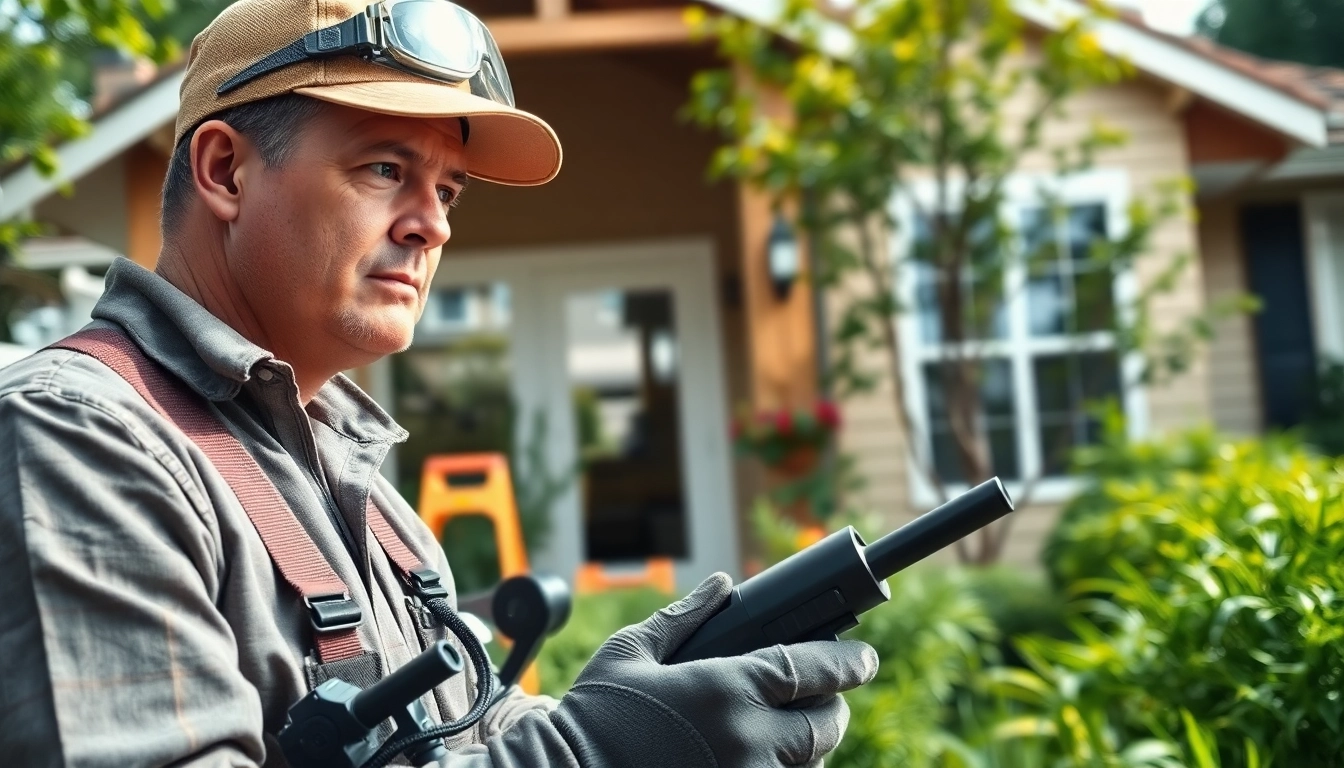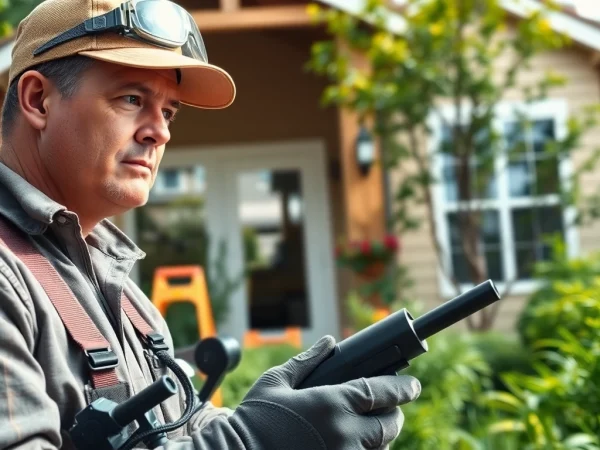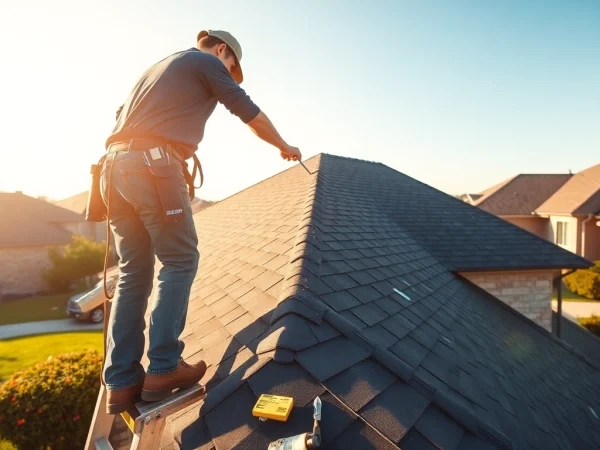Effective Termite Treatments: Methods to Safeguard Your Home
Understanding Termite Treatments
Termites are often referred to as the hidden destroyers due to their ability to cause significant damage to structures before any visible signs of their presence emerge. These pests primarily feed on wood, paper, and other cellulose-based materials, potentially compromising the integrity of your home. To combat such infestations effectively, it is crucial to understand termite treatments and their implications on home safety.
What are Termites?
Termites belong to the order Isoptera and are commonly categorized into three main types: subterranean, drywood, and dampwood termites. Subterranean termites nest underground and require moisture for survival, often entering homes through the soil. Drywood termites, on the other hand, live within the wood they infest and do not require contact with the soil. Dampwood termites thrive in decaying wood and can cause structural damage if not managed promptly. Understanding the biology and behavior of these pests is essential for selecting the right treatment method.
The Importance of Timely Treatments
Early detection and treatment of termite infestations are critical to preventing extensive damage and costly repairs. Homeowners should consider annual inspections for signs of termite activity, such as mud tubes, discarded wings, and hollow-sounding wood. The longer a termite colony remains unchecked, the more severe the damage becomes, potentially leading to structural collapse in extreme cases. Thus, timely treatment is not just a matter of pest control; it is a necessary investment in home maintenance and safety.
Types of Termite Infestations
Identifying the type of termite that has infested your property is crucial for effective treatment. Subterranean termite infestations are often indicated by mud tubes leading up the foundation walls or through cracks. Drywood termites can be recognized by their presence in the wood structure, while dampwood termites usually infest areas with high moisture levels. Knowing the infestation type allows homeowners to choose between localized treatments or comprehensive solutions aimed at eradicating entire colonies.
Common Methods for Termite Treatments
Soil Treatments: Advantages and Limitations
Soil treatments involve applying liquid termiticides to the soil around and beneath a structure to create a chemical barrier that deters or kills termites. These treatments are especially effective for preventing subterranean infestations. However, they require expertise for proper application and can be affected by factors such as ground moisture and soil composition. Periodic reapplication may also be necessary, particularly after heavy rains or construction activities disturb the treatment zone.
Wood Treatments: Protecting Structural Integrity
Wood treatments can be achieved through various methods such as borate treatments, which penetrate the wood and protect it from termites. This treatment is especially useful for new constructions or renovations. While effective, wood treatments do not protect the entire structure if infestation occurs from the ground. Therefore, they are often used in conjunction with other treatment methods for maximum protection.
Bait Systems: Pros and Cons
Bait systems involve strategically placing bait stations around the property to attract termites. When termites consume the bait, they carry the toxic substance back to their colonies, gradually eliminating them. Bait systems are particularly advantageous because they provide continuous monitoring and can be adjusted based on activity levels. However, they can take time to show results and may not be as effective in cases of large infestations.
DIY vs Professional Termite Treatments
When to Go DIY
Some homeowners may consider DIY termite treatment options for small infestations. Common products include liquid insecticides, granular bait, and foam treatments that can be applied to identified problem areas. For minor infestations or preventative measures, DIY approaches can be cost-effective. However, identification of the type of termite and assessment of extent is critical to avoid escalating the problem.
Benefits of Hiring Professionals
Hiring professional pest control services typically provides the best outcome when dealing with significant termite infestations. Professionals possess specialized knowledge and equipment necessary for thorough inspections, accurate identification, and effective treatments. Moreover, they offer warranty options on their services, which can provide peace of mind to homeowners. Comprehensive assessments and ongoing monitoring services are additional benefits that come with professional pest control.
Cost Considerations in Treatments
The cost of termite treatments can vary greatly depending on the method selected, the severity of the infestation, and the size of the property. On average, professional treatments can range from a few hundred to several thousand dollars. DIY products can be more affordable, but consider the risks associated with improper application and potential long-term damage. Always weigh the costs against the potential damage termites can cause to make an informed decision.
Preventive Measures Against Termite Infestation
Regular Inspections: Key to Prevention
Regular inspections by professionals can help in the early detection of termite activity. Homeowners should also conduct visual inspections periodically, checking for signs of mud tubes, wood damage, or discarded wings. Inspect areas like basements, crawl spaces, and attics, where conditions may be conducive to termite infestations.
Home Maintenance Tips to Deter Termites
To prevent termite infestations, homeowners should maintain their properties by ensuring proper drainage, fixing leaks, and removing any wood debris or plant material from around the foundation. Additionally, sealing cracks and openings in building materials can help deter termites from entering. It’s also beneficial to keep mulch and landscaping plants several inches from the home’s foundation to reduce moisture that attracts termites.
Using Chemical Barriers Effectively
Chemical barriers can be a highly effective method for preventing termite infestations when applied correctly. Homeowners can engage professionals to install these barriers during construction or renovations. Regular monitoring and timely reapplication of these barriers are essential for ongoing effectiveness, as environmental factors can lead to degradation over time.
Future Trends in Termite Treatments
Eco-Friendly Treatment Options
As environmental concerns grow, eco-friendly termite treatment options are gaining popularity. These include using natural pesticides derived from plant extracts, which can be safer for humans and pets. Additionally, moisture control methods and physical barriers are being developed to minimize reliance on chemicals while effectively managing termite populations.
Technological Advances in Detection and Treatment
Recent advances in technology have transformed termite detection and treatment methods. Thermal imaging cameras and acoustic sensors are being employed to locate termites without intrusive methods. Furthermore, smart bait systems that use data and quarterly monitoring allow homeowners to track termite activity in real-time, leading to quicker responses and treatment adjustments.
Conclusions on Effectiveness of Various Treatments
In conclusion, understanding the various termite treatments and implementing preventive measures can significantly minimize the risk of infestation. While DIY solutions are available for minor issues, engaging professional services is recommended to ensure thorough assessments and effective interventions. With the continuous evolution of treatment options, homeowners have access to sophisticated methods that improve efficacy while considering environmental impact.










